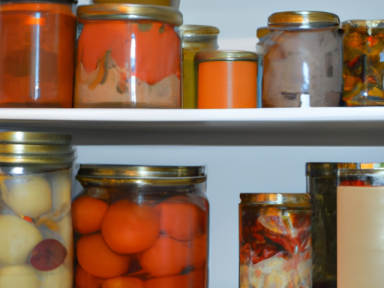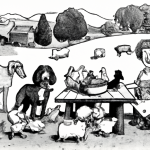Advanced Food Preservation Techniques for Long-term Food Storage
When it comes to preparing for uncertain times, the ability to preserve and store your own food is an essential skill. While canning and freezing are commonly known methods, there are several advanced techniques that can greatly extend the shelf life of your food. In this article, we will explore three effective methods: smoking, fermentation, and dry-curing.
1. Smoking
Smoking is not only a delicious way to enhance the flavor of your food, but it also serves as a natural preservation method. By exposing meat, fish, and even vegetables to the smoke of burning wood, you can slow down the growth of bacteria and inhibit spoilage.
To get started with smoking, invest in a quality smoker or build your own using easily accessible materials such as cinder blocks or old oil drums. Select hardwoods like hickory, mesquite, or applewood for the best flavor. When smoking meat, be sure to properly cure it with salt and spices before placing it in the smoker. The process of smoking can take hours or even days, depending on the item being preserved, so patience is key.
2. Fermentation
Fermentation is a time-honored technique that has been used for centuries to preserve various types of food. This process involves the conversion of sugars and carbohydrates into alcohol or organic acids by helpful bacteria and yeasts. Not only does fermentation extend the shelf life of food, but it also adds depth and complexity to the flavors.
To experiment with fermentation, start with simple vegetables like cabbage, carrots, or cucumbers to make sauerkraut, kimchi, or pickles. All you need is salt, water, and some patience. By submerging the vegetables in a brine solution and allowing the natural fermentation process to occur, you can create tangy and crunchy preserved foods that will last for months.
3. Dry-Curing
Dry-curing is a preservation technique commonly used for meat, especially pork and beef. By removing moisture from the meat, you create an inhospitable environment for bacteria and other microorganisms. This method requires careful temperature and humidity control to ensure safe and successful curing.
To dry-cure meat, start with a high-quality cut and apply a mixture of salt and spices. The meat should then be hung in a cool, dry, and well-ventilated space for several weeks or even months. During this time, the meat slowly loses moisture and develops intense flavors. It is important to monitor the temperature and humidity levels regularly to prevent spoilage.
Conclusion
Advanced food preservation techniques like smoking, fermentation, and dry-curing are excellent ways to extend the shelf life of your food and increase your self-reliance. In times of uncertainty, being prepared with a variety of preservation methods can be a lifesaver. By mastering these techniques, you not only ensure a supply of nutritious food in the future, but you also gain a deeper connection to the ways of our ancestors. Start experimenting with these methods today and reap the benefits for years to come.




GIPHY App Key not set. Please check settings